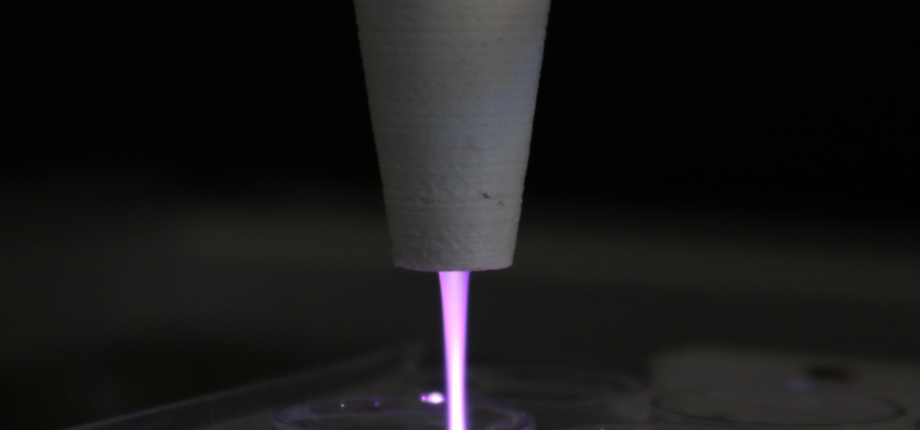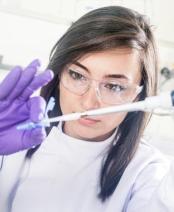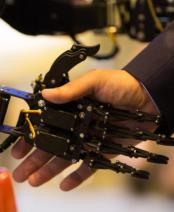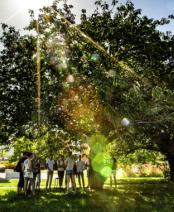PhD award: Cold plasma improves burn injury repair

Will plasmas be used to repair severe burns in the near future? Constance Duchesne explored this question, currently at a fundamental research stage, during her thesis carried out between the Plasma Physics Laboratory (LPP*) and Institut de recherche biomédical des armées (IRBA). This work was carried out as part of the PlasmaSkin programme, co-financed by École Polytechnique and its foundation, as well as the Defence Innovation Agency of Direction Générale de l'Armement (French Defence Procurement Agency), which has just awarded Constance Duchesne a thesis prize.
Plasma is a state of matter in which some of the electrons are detached from the atoms around which they normally orbit. Plasmas form the interior of stars, for example, or lightning. But there are also cold plasmas, at atmospheric pressure and temperature, which serve as a tool for research into 'plasma medicine', a recent field in which studies have already been carried out for the treatment of certain cancers, in particular by Antoine Rousseau, a physicist at the LPP who directed Constance Duchesne's thesis.
"The interest of plasmas for healing was already known, but nothing had been studied in the case of severe burns, which do not heal spontaneously," explains the researcher. With a double degree in chemistry and biology, she therefore initiated this topic using a plasma device previously developed at the LPP. A generator produces a helium plasma which materialises as a violet filament that extends out of a small tube about ten millimetres into the air. It is not so much the helium itself, but the molecules created by the interaction between the plasma and the nitrogen and oxygen in the air that are important. "These molecules, such as nitric oxide, oxygen peroxide or hydroxyl radicals, are naturally produced by the cells. So they will react. But you have to give them just the right amount, no more, no less," explains Constance Duchesne.
She first conducted laboratory experiments on liquids in order to optimise parameters such as treatment duration and distance, correlating them with the production of chemical species, measurements that are impossible to make in vivo. She continued with studies on skin cells (fibroblasts and keratinocytes) and on the endothelial cells that form blood vessels in order to study in particular how these cells multiply and migrate as they do during wound healing. Finally, experiments in mice on the healing of severe burns treated with skin grafts and then cold plasma showed very good results on angiogenesis, i.e. the revascularisation that is essential for the success of the graft, but also on the reconstruction of the protein matrix that surrounds and supports the cells. "In addition to these in vivo studies, we have also carried out mechanistic studies to understand what is happening at the level of the cell machinery."
Constance Duchesne also collaborated with Institut Pasteur to measure the extent to which plasma treatment could, in addition to healing, limit staphylococcus aureus infections that are common in severe burn injuries. This treatment was less effective than an antibiotic, but it helped control the infection and save the skin graft. Finally, the researcher has shown that the plasma treatment promotes the activation of macrophages, cells of the immune system that are at the forefront when bacterial infections occur. This is a great source of satisfaction for the researcher, because this action on immunity had never been demonstrated before. "I carried out these latest experiments because I had some time left at Institut Pasteur. What you discover on the side is sometimes the most interesting!". This promising research is continuing while Constance Duchesne continues her career as a research engineer with the company L'Oréal.
*LPP: a joint research unit CNRS, École Polytechnique - Institut Polytechnique de Paris, Observatoire de Paris, Sorbonne Université, Université Paris-Saclay













